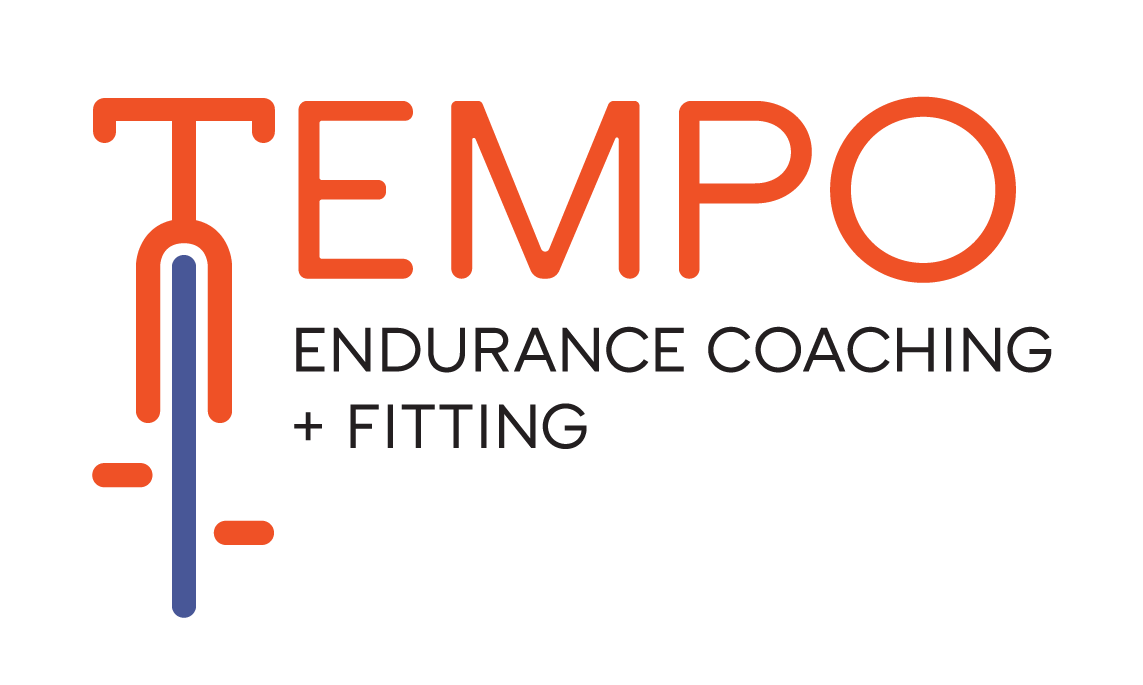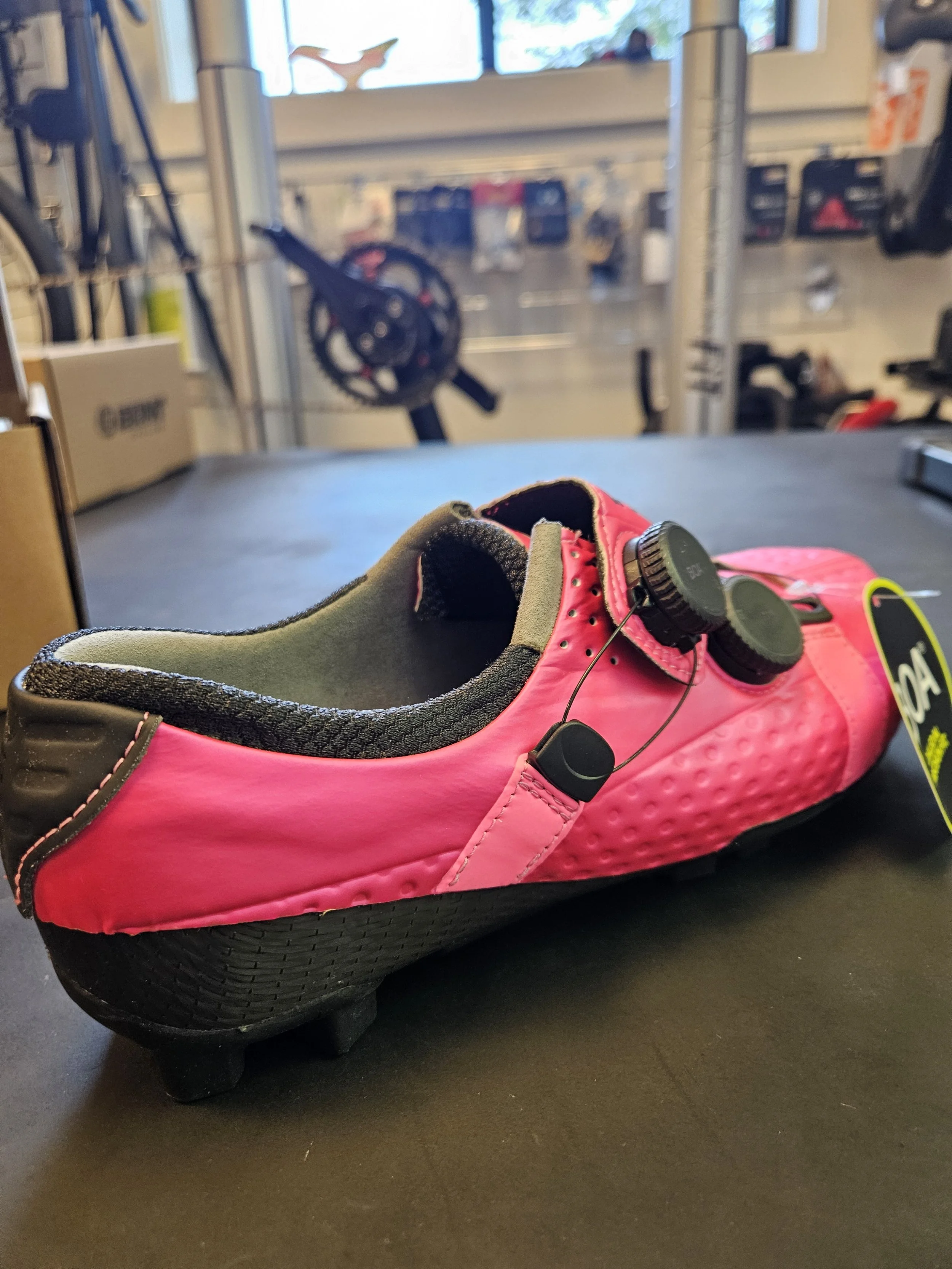Effective Foot Support
The new Specialized Ares is an incredible high performance option with a wider forefoot than in the past.
Foot and knee pain while riding? Let's get you dialed in!
Problems arising from improperly fitting shoes can manifest in various ways, impacting comfort and potentially leading to injuries. Numb toes, characterized by a loss of sensation, can occur due to excessive pressure on the nerves in the forefoot, often caused by shoes that are too narrow or tight in the toe box. This restricted blood flow and nerve compression can lead to a tingling or pins-and-needles sensation as well. Knee pain is another common complaint linked to inadequate shoe support or improper fit. When shoes don't provide sufficient cushioning or stability, the impact forces during activities like walking or running are not adequately absorbed, leading to increased stress on the knee joint. This can exacerbate existing knee conditions or even contribute to new ones. "Hot foot," a burning sensation in the soles of the feet, can be caused by a combination of factors related to shoe fit, including excessive friction, inadequate ventilation leading to increased foot temperature and moisture, and pressure points. Ill-fitting shoes can create localized pressure, irritating nerves and blood vessels, thus contributing to this uncomfortable sensation. Ensuring proper shoe fit, with adequate toe box space, appropriate arch support, and sufficient cushioning, is crucial for preventing these issues and maintaining foot health and overall comfort during physical activity.
Riders need stability
Riders frequently benefit from enhanced insole support. Optimizing the stability and overall support of the foot within cycling shoes offers consistent advantages. Cycling footwear, often constructed with a rigid carbon fiber sole, essentially acts as a flipper that encases the foot, prioritizing power transfer over inherent cushioning and support. Introducing a more supportive insole can address this inherent limitation, leading to several potential benefits. Improved arch support can contribute to better alignment throughout the kinetic chain, potentially reducing the risk of overuse injuries in the feet, ankles, knees, and even hips. Enhanced stability within the shoe can optimize pedaling efficiency by minimizing unwanted foot movement and maximizing the force applied to the pedals. Furthermore, a well-designed insole can offer increased comfort, particularly on longer rides, by providing additional cushioning and reducing pressure points. While high-performance cycling shoes are crucial for efficient power transfer, the addition of a quality insole can significantly enhance rider comfort, stability, and potentially reduce the likelihood of discomfort or injury. Therefore, considering and investing in appropriate insole support is a worthwhile consideration for cyclists of all levels seeking to optimize their performance and well-being on the bike.
A custom pair of Bont Cycling Vaypor G gravel shoes waiting for their lucky owner
A great bike fit starts with the feet
A comprehensive bike fit begins with a thorough evaluation of the cyclist's feet, considering their unique dimensions and how they function under the stresses of pedaling. At Tempo Endurance Coaching, we employ a detailed assessment process, conducted both off and on the bike, to precisely understand each athlete's individual requirements for optimal shoe support and overall cycling biomechanics. This dual approach allows us to analyze static foot structure and dynamic foot movement during the pedaling motion. By carefully examining these factors, we can ensure proper alignment, stability, and power transfer, ultimately enhancing comfort, efficiency, and injury prevention.
The Bont Cycling Vaypor 23 is an amazing World Tour level shoe with multiple widths available.
Arch height and placement
Ensuring appropriate arch height and fore-aft placement of foot support is paramount for cycling comfort and performance. While readily available off-the-shelf insoles, such as the Specialized Body Geometry, often suffice, a more discerning approach is crucial for optimizing biomechanics. Asymmetries in arch height between the left and right feet necessitate individualized support solutions. Furthermore, the unique demands of cycling, characterized by increased pressure on the forefoot during the pedal stroke, require insoles that adequately address this specific loading pattern. The G-8 2620 insole distinguishes itself by offering a high degree of adjustability, allowing for precise customization of support levels. This "tuneability" is particularly beneficial for high-performance cyclists who demand optimal foot stability and power transfer. Carefully considering these factors—arch height, fore-aft placement, asymmetry, and the specific pressures encountered during cycling—is essential for selecting or customizing insoles that enhance comfort, prevent injury, and maximize pedaling efficiency.
Metatarsal pads and wedging
Addressing forefoot nerve pain, often manifesting between the toes, can frequently be alleviated by employing metatarsal pads. These pads function by gently spreading the metatarsal heads, commonly referred to as the "knuckles" of the toes, thereby decompressing the affected nerves and reducing discomfort. The implementation of metatarsal pads can range from the utilization of readily available, over-the-counter insoles that incorporate this feature, to a more personalized and custom-tailored solution crafted to the individual's specific foot anatomy and the precise location and severity of the nerve impingement. A thorough assessment of the foot structure and biomechanics is crucial to determine the most effective approach.
Similarly, the issue of foot wedging, characterized by either an inward or outwardly tilting foot posture, necessitates a comprehensive evaluation. This assessment ideally involves an off-the-bike screening process to analyze the static alignment of the feet and legs, supplemented by a detailed discussion during the bike fitting session. This conversation should focus on the rider's perception of foot pressure points and any sensations of instability experienced while pedaling. Observing the foot's behavior and stability directly on the bike provides invaluable insights. Successfully resolving foot wedging often requires a meticulous and iterative process of trial and error, involving the strategic placement and selection of appropriate wedges. This detail-oriented approach is paramount in establishing a perfectly aligned and stable foundation for the foot within the cycling shoe, ultimately enhancing comfort, power transfer, and injury prevention.
Checking shoe and pedal wear
A thorough bike fit goes beyond just the rider's body measurements and interaction with the bike's contact points. It must also include a detailed evaluation of the equipment involved, particularly the crucial interface between the rider's foot and the pedals. This assessment should encompass the condition of the cycling shoes, the pedals themselves, and the cleats that connect them. Over time, wear and tear on these components can subtly alter the intended biomechanics and negatively impact pedaling efficiency and potentially lead to discomfort or injury.
Great shoe/pedal connection here on these Bont Riot MTB shoes.
Specifically, the fit should meticulously examine pedal and cleat wear. Even slight rounding of pedal edges or deformation of cleat surfaces can introduce unwanted movement and compromise the secure connection between the shoe and the pedal. Similarly, for off-road pedal systems that often feature pontoons or a supportive sole structure around the cleat, the wear on these areas needs careful scrutiny. If these supporting structures are significantly worn, they may no longer provide the intended stable platform for the foot.
The consequence of worn pedals or shoes leading to a lateral tilt of the foot during the pedal stroke is significant. Such instability creates a constant challenge for the rider. With each revolution, the body is forced to compensate for the misalignment, engaging additional muscles and expending unnecessary energy simply to maintain a semblance of proper form. This not only reduces pedaling efficiency and power transfer but also increases the risk of overuse injuries in the knees, hips, and ankles as they attempt to stabilize the unstable platform. Addressing these equipment-related issues is therefore a fundamental aspect of achieving an effective and sustainable cycling position.
Note the wear and lack of connection on the inside pontoon here.
Lets get you set up for success
Achieving optimal cycling performance during long rides and races hinges on a well-configured shoe setup that allows you to focus entirely on the effort, without foot-related distractions. Investing time and effort into this crucial detail is paramount, and seeking guidance from a qualified and knowledgeable professional can prove invaluable. They possess the expertise to identify potential issues and fine-tune your shoe support to your specific needs. Common problems such as hot spots, numbness, or discomfort can significantly impede your performance and enjoyment. A professional can assess your foot structure, pedaling mechanics, and shoe fit, recommending solutions like custom orthotics, insole adjustments, cleat positioning refinements, or even suggesting alternative shoe models. By proactively addressing these factors, you can ensure a comfortable and efficient power transfer throughout your pedal stroke, ultimately contributing to a more successful and enjoyable cycling season. Let's resolve any existing footwear issues so you can fully embrace the summer on your bike and achieve your cycling goals!







